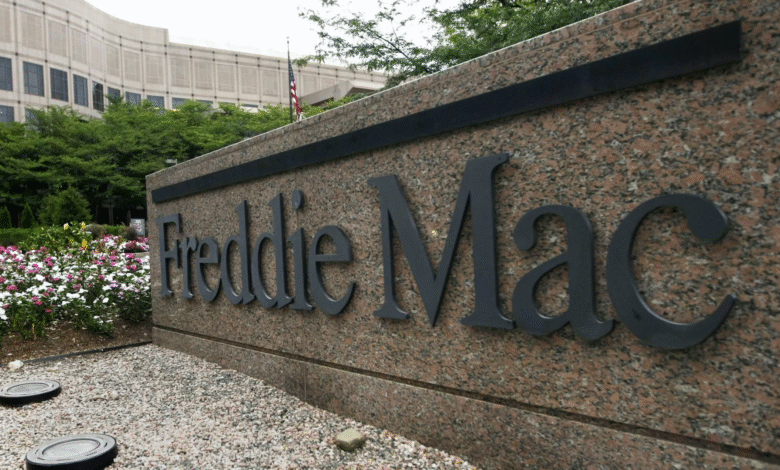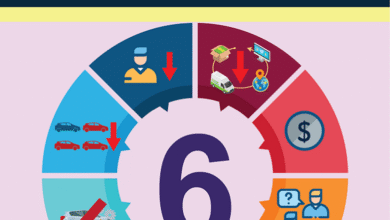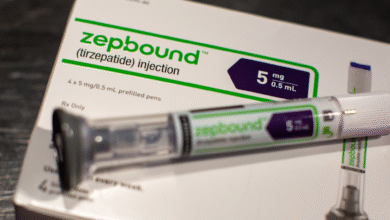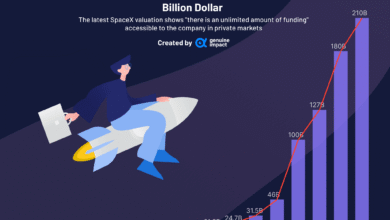Mortgage Rate Drop Sparks Homebuyer Demand Increase

In a welcome shift for aspiring homeowners, the recent mortgage rate drop has brought renewed vigor to the housing market. As average interest rates for 30-year fixed-rate mortgages decreased to 6.77%, potential homebuyers are increasingly optimistic about seizing the opportunity. This decrease has triggered a noticeable rise in homebuyer demand, with mortgage applications jumping by 9% this week compared to the previous period. Additionally, the refinance demand surged by an impressive 9%, reflecting a growing interest from homeowners looking to lower their monthly payments. With current mortgage rates at their lowest point in months, the landscape appears promising for both buyers and those refinancing.
A recent decrease in interest rates has sparked a significant uptick in the mortgage sector, with many potential buyers looking to capitalize on lower costs for borrowing. The trend towards cheaper home financing options, particularly through long-term loans like fixed-rate mortgages, is reshaping the market dynamics. As homebuyer enthusiasm increases, applications for both new mortgages and refinancing are soaring, suggesting a robust response to more favorable lending conditions. Industry experts note that this change not only bolsters immediate buyer activity but also revitalizes the overall housing economy, indicating a positive shift in consumer confidence amidst fluctuating market conditions.
Understanding the Impact of Mortgage Rate Drop
The recent decline in mortgage rates has sparked significant interest among homebuyers. With the average interest rate for 30-year fixed-rate mortgages dropping to 6.77%, home financing has become more accessible for many prospective buyers. This decrease has led to a noticeable uptick in mortgage applications, highlighting a renewed vigor in the housing market. When mortgage rates are low, the affordability of homes improves, encouraging potential buyers to take the plunge into homeownership.
Additionally, this drop in rates is enticing existing homeowners to consider refinancing their current loans. As mortgage applications to refinance rose by 9% last week, many homeowners are taking advantage of the opportunity to secure lower monthly payments, thus easing their financial burden. The drop in rates allows for increased consumer confidence, as homebuyers feel more secure in their ability to manage new or existing loans.
Rising Homebuyer Demand Amidst Mortgage Rate Decline
The decline in mortgage rates has positively influenced homebuyer demand, with applications for home purchases increasing by 9%. This surge indicates a growing confidence among buyers, likely driven by favorable market conditions such as increasing housing inventory and moderate home-price growth. The average loan size for purchase applications has also decreased, suggesting buyers are navigating their options more strategically given the improved lending conditions.
Moreover, this spike in applications contrasts sharply with the previous lull in demand when rates were consistently high. With rates finally stabilizing at more attractive levels, it’s no surprise that homebuyer sentiment is shifting. Industry experts note that while overall consumer sentiment remains shaky, the short-term effects of lower rates can stimulate the market, allowing buyers to reassess their readiness to purchase a new home.
The Relationship Between Mortgage Applications and Market Trends
There’s a strong correlation between mortgage applications and the broader housing market trends. As mortgage rates dip, more buyers tend to enter the market, which can lead to a rise in home sales. However, it’s important to understand that despite the recent increase in applications, pending sales have not shown a corresponding rise. This indicates that while buyers are applying for mortgages, actual transactions may still face obstacles, such as consumer hesitation and high cancellation rates.
The Mortgage Bankers Association reported a 9.4% increase in total mortgage application volume last week, a clear indicator that lower rates are incentivizing buyer activity. However, the market remains unpredictable, with various factors contributing to consumer reluctance. It underscores the importance for potential buyers to remain informed about the ongoing shifts in mortgage strategy and housing conditions.
Current Trends in Refinancing Demand
With the mortgage rate drop creating a buzz in the real estate sector, refinancing demand has surged dramatically. A staggering 56% increase in refinancing applications compared to the same week last year highlights how significant this drop in rates has been for homeowners. This pattern indicates that many homeowners are recognizing the benefits of refinancing their existing loans at lower interest rates to improve their financial situations.
Refinancing not only allows homeowners to secure lower monthly payments but can also facilitate access to cash for personal investments or home improvements. As the housing market cools slightly, it presents an excellent opportunity for homeowners to rethink their financial strategies, with refinancing being a critical tool in maximizing their home equity.
Analyzing 30-Year Fixed-Rate Mortgages
The 30-year fixed-rate mortgage remains one of the most popular loan types among homebuyers, largely due to its predictability and stability. As the current average rate for these mortgages rests at 6.77%, many first-time buyers are seizing this opportunity to lock in a long-term fixed interest rate. This instrument enables homeowners to maintain consistent payments over the life of the loan, which is particularly valuable in an uncertain economic landscape.
Moreover, with the current drop reported as the lowest level in three months, it provides an attractive entry point for individuals considering homeownership. This rate decrease could stimulate economic activity, leading to an increase in home sales as buyers rush to establish their mortgage plans before rates rise again. The 30-year fixed mortgage remains a cornerstone of the American housing system, providing stability for both homeowners and lenders alike.
Monitoring Future Mortgage Rates
While the recent mortgage rate drop is encouraging for homebuyers, it’s essential to closely monitor market trends for future fluctuations. According to industry experts, there is a possibility that rates may begin to rise again, especially following the observed patterns of rate changes around holiday periods. Keeping an eye on mortgage rates is vital for homebuyers, as even slight increases can significantly impact monthly payments and overall affordability.
Buyers are advised to stay informed through reliable sources and consider their financial readiness during any rate movement. Rates have a history of volatility, and while a drop is beneficial in the short term, potential buyers must be prepared for any forthcoming shifts in the market landscape to make informed decisions.
Factors Influencing Homebuyer Sentiment
Homebuyer sentiment plays a crucial role in the dynamics of the housing market, often swayed by economic conditions, interest rates, and personal circumstances. The current drop in mortgage rates has injected a dose of optimism among potential home buyers, especially amidst the challenges posed by high cancellation rates on contracts. Despite an increase in applications, the market exhibits signs of caution, with consumers weighing their options more cautiously.
In addition to lower rates, factors such as the availability of homes and the rate of home-price growth are significant influences on buyer sentiment. An environment of increasing inventory and reasonable home prices can boost consumer confidence further and translate into stronger home buying activity. This interplay between consumer sentiment and market conditions will be crucial to watch in the months ahead.
The Role of the Mortgage Bankers Association
The Mortgage Bankers Association (MBA) serves as a valuable resource for understanding trends in mortgage applications and overall housing market dynamics. Their reports highlight essential data indicating shifts in the market, reflecting how variations in mortgage rates affect buyer behavior. The recent report indicating a 9.4% increase in total mortgage applications showcases the impact of rate changes on buying power, as reported by the MBA.
As the voice of the mortgage industry, the MBA’s insights help both consumers and lenders navigate the complexities of home buying and refinancing. With increasing homebuyer demand following the rate drop, understanding these trends through the lens of the MBA is crucial for making informed financial decisions in a rapidly changing housing market.
Navigating the Current Real Estate Landscape
Navigating the current real estate landscape requires staying updated on market trends and understanding the implications of mortgage rate movements. With the drop in rates leading to a boost in applications for mortgages, potential buyers are encouraged to consider the timing of their purchase carefully. While rates may fluctuate, the overall climate seems favorable for homebuyers looking to capitalize on the current opportunities.
However, it’s crucial to assess personal financial situations and market conditions closely. Despite the favorable rates, factors like consumer sentiment and property availability must also play a role in decision-making. Engaging with real estate professionals and lenders will ensure that buyers can make well-informed choices moving forward.
Frequently Asked Questions
How has the recent mortgage rate drop affected homebuyer demand?
The recent drop in mortgage rates has significantly increased homebuyer demand, with applications for mortgages to purchase homes rising by 9%. This is partly due to the lower average rate for 30-year fixed-rate mortgages, which fell to 6.77%, encouraging more buyers to enter the market.
What impact does the mortgage rate drop have on refinance demand?
The mortgage rate drop has triggered a notable increase in refinance demand, with applications for refinancing home loans rising 9%, and showing a 56% increase compared to the same week last year. Homeowners are motivated to refinance at lower rates, making it an attractive option.
Are current mortgage rates favorable for home purchases?
Yes, current mortgage rates following the recent drop are more favorable for home purchases. With the average contract interest rate for 30-year fixed-rate mortgages at 6.77%, potential buyers are finding it a good time to apply for mortgages, evidenced by a 9% increase in applications.
How do mortgage applications change during a mortgage rate drop?
During a mortgage rate drop, we typically see a spike in mortgage applications. The recent decrease led to a 9% increase in total mortgage application volume, indicating that lower rates drive both prospective buyers and current homeowners to seek mortgages more actively.
What should homebuyers know about the current mortgage conditions after the rate drop?
Homebuyers should know that the current mortgage conditions are more favorable due to the recent drop in mortgage rates to 6.77%. This has resulted in increased availability of housing inventory and moderate home-price growth, making it an opportune time to secure a mortgage.
How do 30-year fixed-rate mortgages perform when mortgage rates drop?
When mortgage rates drop, 30-year fixed-rate mortgages generally see increased demand, as more buyers look to lock in lower monthly payments. This recent drop to an average of 6.77% coincided with a 9% increase in mortgage application submissions.
Will home prices be affected by the current mortgage rate drop?
The current mortgage rate drop may lead to increased homebuyer demand, which can stabilize or even increase home prices in the short term. However, the overall impact on home prices will depend on various factors, including housing inventory and market conditions.
What trends are emerging in the mortgage market after the recent rate drop?
Emerging trends include increased homebuyer demand and refinancing activity following the mortgage rate drop. With mortgage applications for purchases and refinances climbing by 9%, it’s clear that lower rates are influencing buyer behavior positively.
Can I benefit from refinancing my mortgage after the recent rate drop?
Yes, refinancing your mortgage after the recent rate drop can be beneficial, especially given the 9% increase in refinance applications. Lower rates can reduce your monthly payments, making it a wise financial move for many homeowners.
What is the projected future of mortgage rates after the recent drop?
While the recent drop in mortgage rates has been favorable, projected trends suggest some fluctuation, as rates have begun to rise again post-holiday. It’s essential to stay informed on market trends to make timely decisions regarding mortgage applications or refinancing.
| Key Point | Details |
|---|---|
| Mortgage Rate Decrease | The average contract interest rate for 30-year fixed-rate mortgages dropped to 6.77% from 6.79%. |
| Refinance Applications Increase | Refinance applications rose by 9% for the week and were 56% higher compared to the same week last year. |
| Home Purchase Applications Rise | Purchase mortgage applications also saw a 9% increase for the week and were 25% higher than last year. |
| Market Trends | Despite some positive trends, overall consumer sentiment remains unstable with high contract cancellation rates. |
Summary
The recent mortgage rate drop has instigated a notable response from homebuyers, reflecting increased applications for both refinancing and home purchases. As mortgage rates decreased slightly, many potential buyers took the opportunity to act, leading to a surge in mortgage demand. This trend indicates that even a modest reduction in rates can have a significant impact on market dynamics, highlighting the sensitivity of homebuyer behavior to fluctuations in interest rates.




